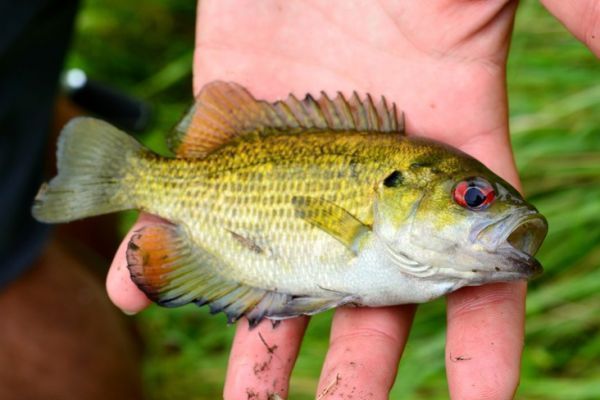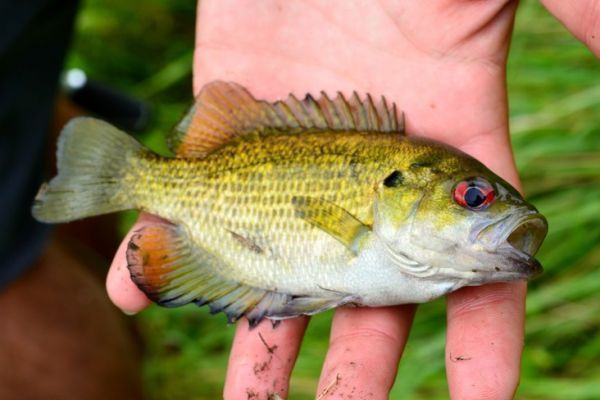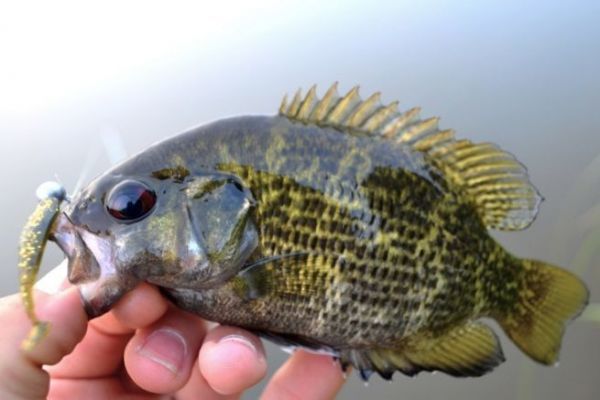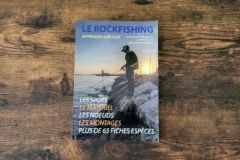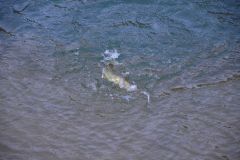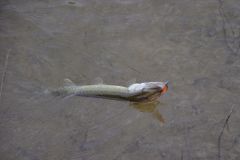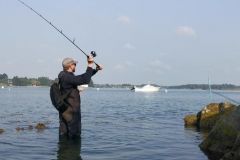In this article, you'll discover a fish with a special way of life that's great fun to catch. Embark on a real freshwater rockfishing session!
A sunfish... What's a sunfish?
The rock bass is native to North America. It is found in the northeastern quarter of the United States and in southeastern Canada. It is a fish much appreciated across the Atlantic for its playfulness, and is one of the so-called "gamefish". It was introduced to France in the early 1900s in the Saône and Loire rivers. Today, it is reported in the Loire, around Nevers, and in the Saône, where it is known to occur. In the Nièvre département, several tributaries of these two rivers also have small, sparse populations. According to local anglers, its distribution seems to be slowly expanding on these same rivers.
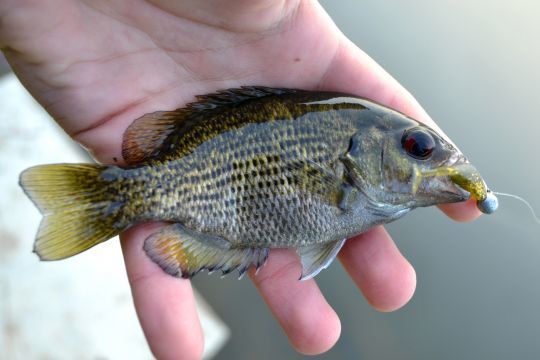
The rock bass is a small centrarchid fish (in the same family as the black bass). This predator is aptly named, since its preferred habitat is the rocks! The Latin name Ambloplites Rupestris also evokes this "rock" side ( Rupestris meaning rock in Latin). To find our sunfish, it's essential to explore rocky crevices and faults, boulders, roots, piles of branches, or even under riverbanks... It is rare to find it on beaches, muddy bottoms and, more generally, on all fine sedimentary bottoms.
Crappies are found in oxygenated areas with moderate to weak currents. They prefer warm waters (17 to 24°C in summer) and shallow areas. The most important thing is that there are rocks!
Bluegill is round in shape. It is dark in color, mottled black, with attractive golden to olive mottling. It has large red or orange eyes, which suggest a semi-nocturnal or water-tinted activity. Its large mouth enables it to suck up its prey from the bottom. Rather voracious, it is particularly fond of small invertebrates, such as crayfish, larvae and worms, and does not hesitate to munch fry that pass within reach of its rocky hideout.
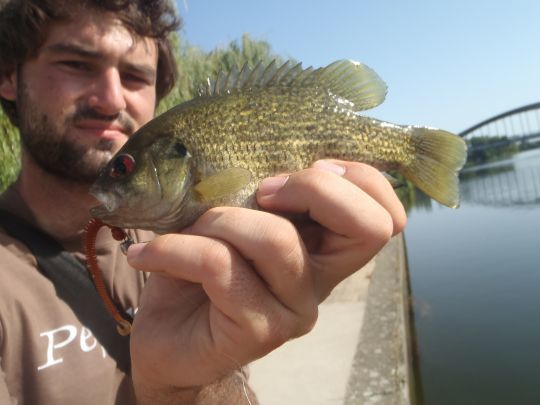
The maximum size of the bluegill is around 35 cm. In France, the average is 15 to 20 cm, with 25 cm being a fine fish.
Bluegill reproduction takes place from May to June in France. Its mode of reproduction is comparable to that of the black bass: the male digs a rough nest on the gravel bottom, and will only stop guarding his offspring once the fry are self-sufficient. As this fish is vulnerable at this time of year and rare in our waters, it is advisable to leave it alone during the spawning period. The best time to catch this fabulous little fish is from July to October.
A nuisance fish?
Certainly not! Rather, its rarity prompts us to protect it. As we've seen, the sunfish is a discreet fish. Although voracious, it has perfectly found its place in the local piscicultural balance. Its very particular habitat limits its population growth. Its habits are not comparable to those of the sun perch, and its fecundity rate seems to be much lower (there is very little scientific data on the number of eggs or the fecundity rate of the sunfish).
The bluegill is often caught by mistake. It is often confused with its centrarchid cousins, such as black bass, sun perch and smallmouth black bass... This curiosity of our waters is starting to attract the interest of some local anglers with a passion for subtle, light fishing.
The first step in the search for the round sunfish
When I first arrived in the Nièvre to catch crappie, I didn't really know how to lure this fish. I was content to slowly scrape the bottom in more or less rocky areas with small soft lures just as if I were looking for perch. Clearly, in view of the few fish caught (apart from perch), this was not the right approach.
It wasn't until I met François, a local fisherman who was as kind as he was good, that things clicked. François said to me: "Have you ever heard of rockfishing for scorpion fish? Well, it's exactly the same!
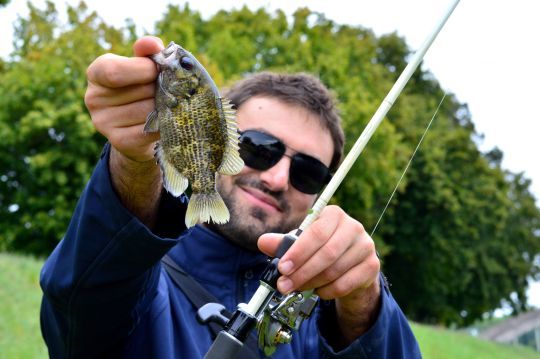
The technicalities and subtleties of crappie fishing were then revealed: pure freshwater rockfishing. After this encounter, I tried to prospect the crevices and "holes" as I did when fishing for scorpion fish at sea... And it paid off! As far as equipment is concerned, rockfishing gear is just what you need.

 /
/ 